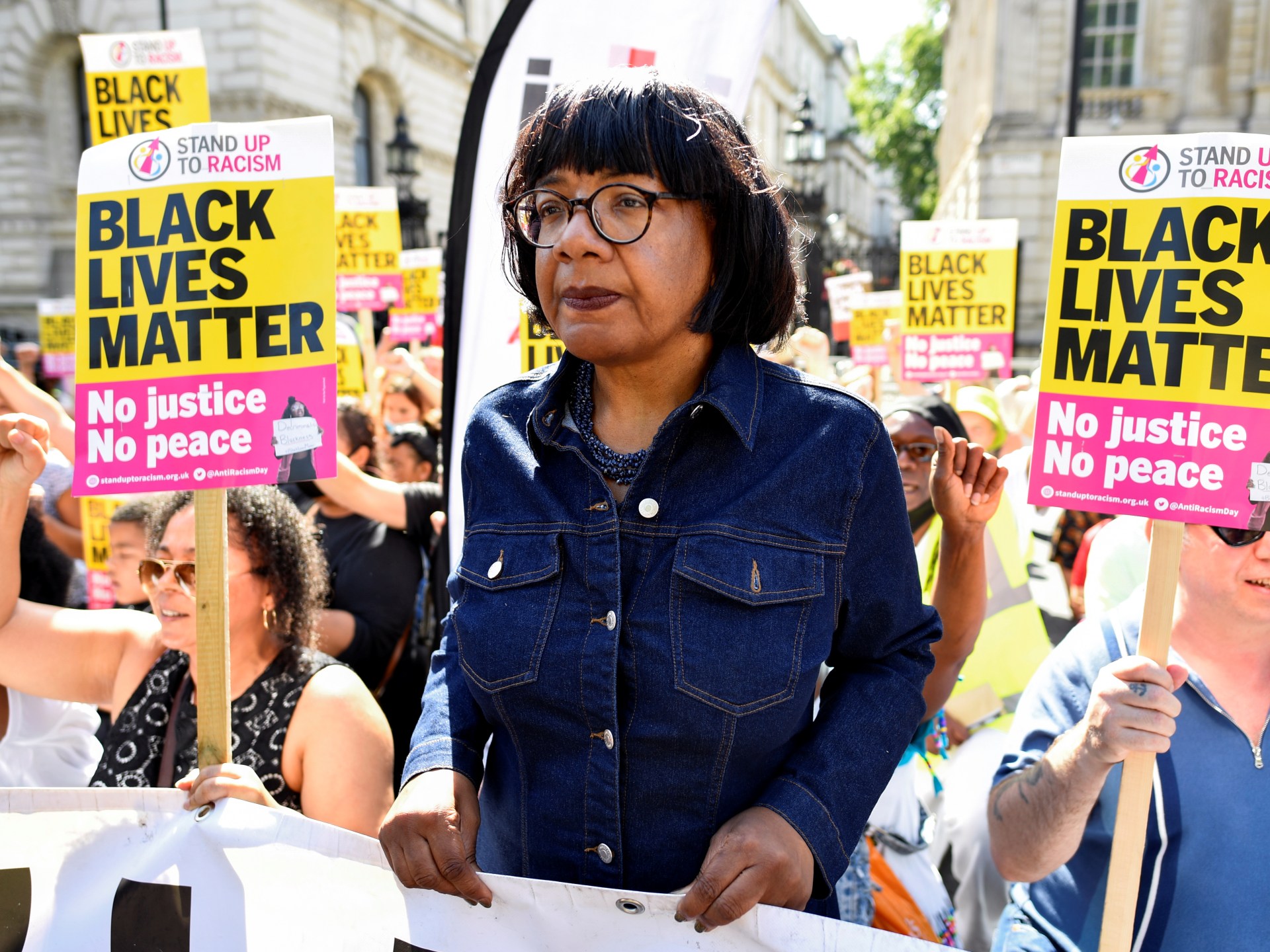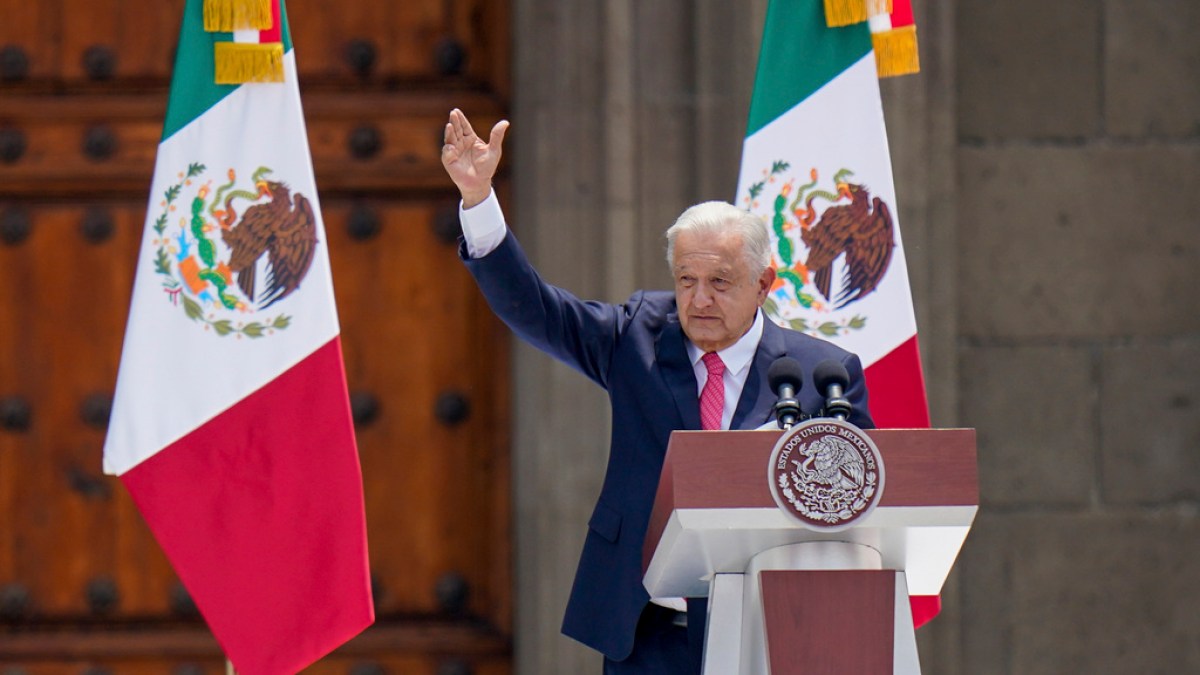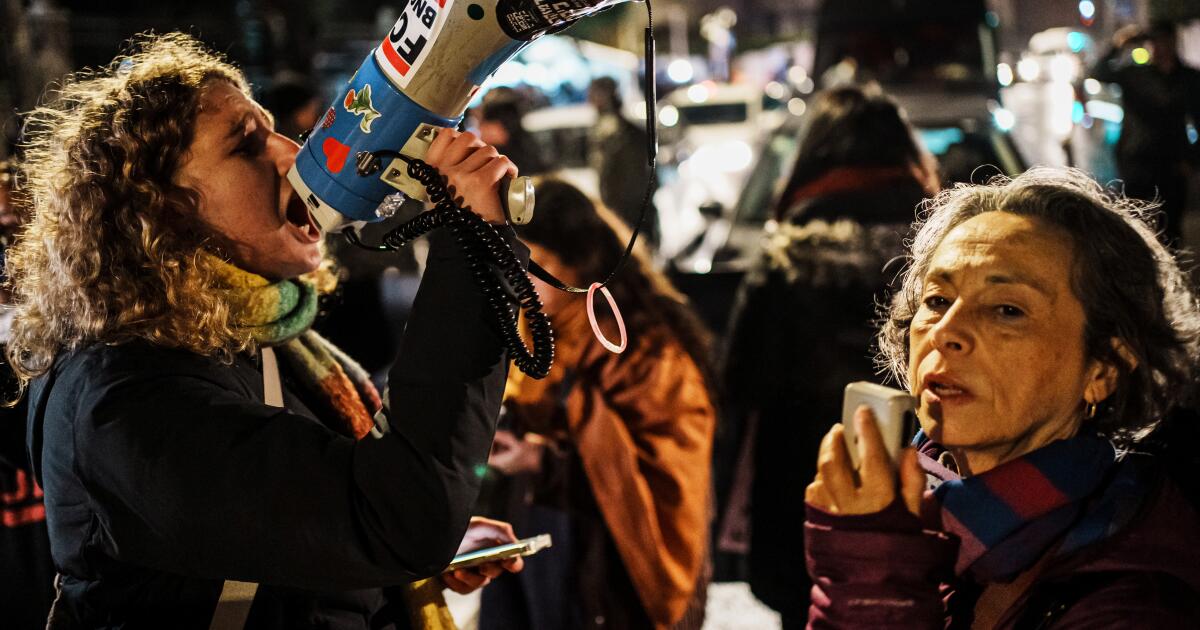Throughout her presidential campaign, Vice President Kamala Harris has received encouragement from her “big, beautiful, stepfamily,” according to her husband.
And when second gentleman Doug Emhoff, who is Jewish, took the stage to join Harris at the Democratic National Convention, he was followed by her Jamaican Indian sister, her white Gen Z stepchildren, her Black brother-in-law and her Indian aunt. Even her husband’s white ex-wife.
“We may not look like other families in the White House,” her stepson, Cole Emhoff, said at the convention last month. “But we are ready to represent all families in America.”
Kamala Harris' goddaughter Helena Hudlin, left, Harris' niece Meena Harris and Harris' stepdaughter Ella Emhoff speak during the Democratic National Convention in Chicago.
(J. Scott Applewhite/Associated Press)
It was a picture of a distinctly modern American family: mixed-race, interfaith and blended, a mosaic of national origins, cultures and values.
Data show that “nontraditional” families—those made up of single parents, single adults, cohabiting couples, and stepfamilies—now outnumber “traditional” nuclear families in the United States.
More than 4 in 10 adults have at least one stepparent, and about 16% of children live in a household with a stepparent, stepbrother or half-sibling, according to Pew Research.
Compare that to 1960, when the United States had what Pew called “a dominant family form,” with 73 percent of all children living with two parents in their first marriage.
Harris, who was born in 1964, is the daughter of an Indian mother and a Jamaican father who divorced when she was in primary school. She later married, at age 49, a man of a different race who practices a different faith. She is stepmother to the two children from her first marriage.
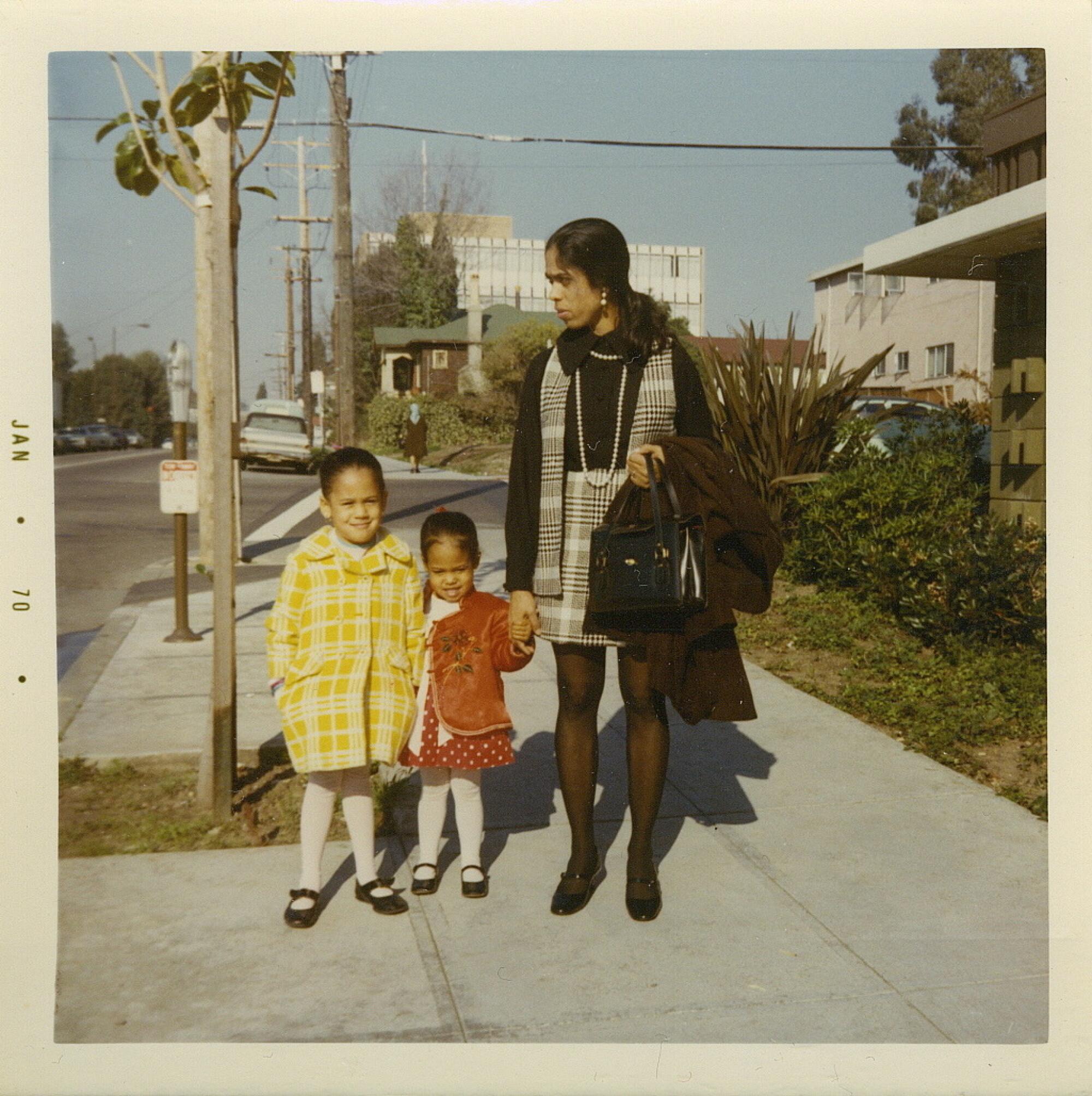
A photograph of Kamala Harris, Maya Harris and their mother, Shyamala Gopalan, appears in Kamala Harris’ book “The Truths We Hold.”
(Courtesy of Kamala Harris)
Harris is also part of a growing number of women who have never given birth. Last year, the U.S. fertility rate hit a record low, and according to Pew, the share of childless adults under 50 who say they are unlikely to have children was 47%, up 10 percentage points between 2018 and 2023.
Multiracial couples are also increasingly common. Nearly 34 million people (about 10% of the population) identified as multiracial in 2020, a 276% increase from 2010, according to the Census Bureau.
And for all the political bickering about family values and diversity, the makeup of liberal and conservative families isn't that different.
About 11.9 percent of conservatives live in mixed-race families, compared with 11.4 percent of liberals, a statistically insignificant difference, according to an analysis of mixed-race families from the 2012 biannual General Social Survey by Northwestern University law professor and social scientist James Lindgren.
He found that about 9.5 percent of Republican families are mixed race, compared with 11.2 percent of Democratic families.
Harris has put her family at the center of her pitch to voters. In her 2019 memoir, “The Truths We Hold: An American Journey,” Harris recalled how her mother, Shyamala Gopalan Harris, recognized her daughters’ dual identities.
“She knew her adopted homeland would see Maya and me as Black girls, and she was determined to make sure we grew up as confident, proud Black women,” Harris wrote.
Shyamala, a Hindu, also encouraged neighbors to take their daughters to a black Baptist church on Sundays.
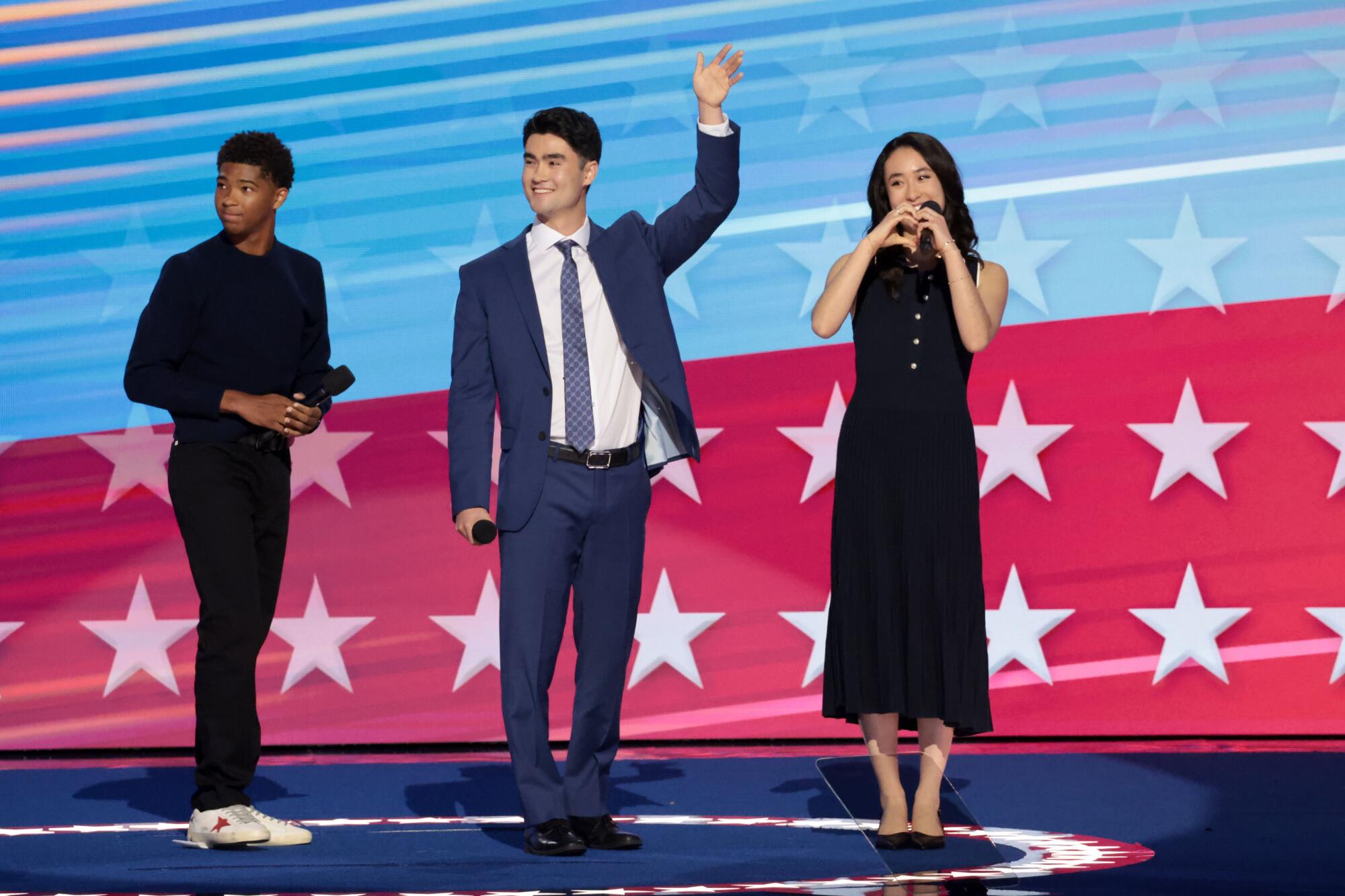
Kamala Harris' godson Alexander Hudlin, left, Harris' nephew Jasper Emhoff and Harris' niece Arden Emhoff wave after speaking during the Democratic National Convention in Chicago.
(Myung J. Chun / Los Angeles Times)
As for families that emerge after a divorce, they present their own challenges.
“Those of you who are in blended families know that they can be a little complicated,” Doug Emhoff said at the convention.
But after he and Harris married in 2014, he said, Cole and Ella decided not to call Harris “stepmom,” believing it didn't quite fit their relationship.
“As soon as our kids started calling her ‘Momala,’ I knew everything was going to be okay,” Doug Emhoff said.
Kerstin Emhoff, Ella and Cole's biological mother, went out of her way to defend Harris after an old video surfaced of Donald Trump's running mate, Ohio Sen. JD Vance, calling Harris and other Democratic leaders “childless catwomen” who “don't really have a direct stake” in the country's future.
“These are baseless attacks,” Kerstin Emhoff said, describing Harris as a “loving, caring and fiercely protective” co-mother. “I love our stepfamily and am grateful to have her in it.”
And when a TV producer posted on X that “Kamala’s husband’s ex-wife is more supportive of her than Trump’s current wife,” Kerstin re-shared the post.
“Damn right I do 👊,” she wrote.
From the beginning, the family trees of America's first families have been mixed, even biracial. But the details were often kept secret.
The first family to be blended was, appropriately enough, George Washington's.
The first president had no biological children, but his wife, Martha, did have children from a previous marriage and he raised them, as well as his grandchildren. One of those grandchildren, George Washington Parke Custis, had children with women who were enslaved.
Over the past two and a half centuries, American presidents and vice presidents have had complex family lives.
Following the death of Thomas Jefferson's wife, Martha, Jefferson fathered children with Sally Hemings, a black woman enslaved by the family. Hemings, who was biracial, was Martha's half-sister.
After Jefferson was elected president in 1801, newspapers and his opponents linked Jefferson to Hemings in order to discredit him. Jefferson offered no public response.
Many presidents raised their wives' children from previous marriages. Only a handful of presidents had no biological children: Washington, James Madison, James Buchanan, James K. Polk and Andrew Jackson. Some presidents, including Jackson and Ronald Reagan, adopted children. Many faced accusations of having illegitimate children.
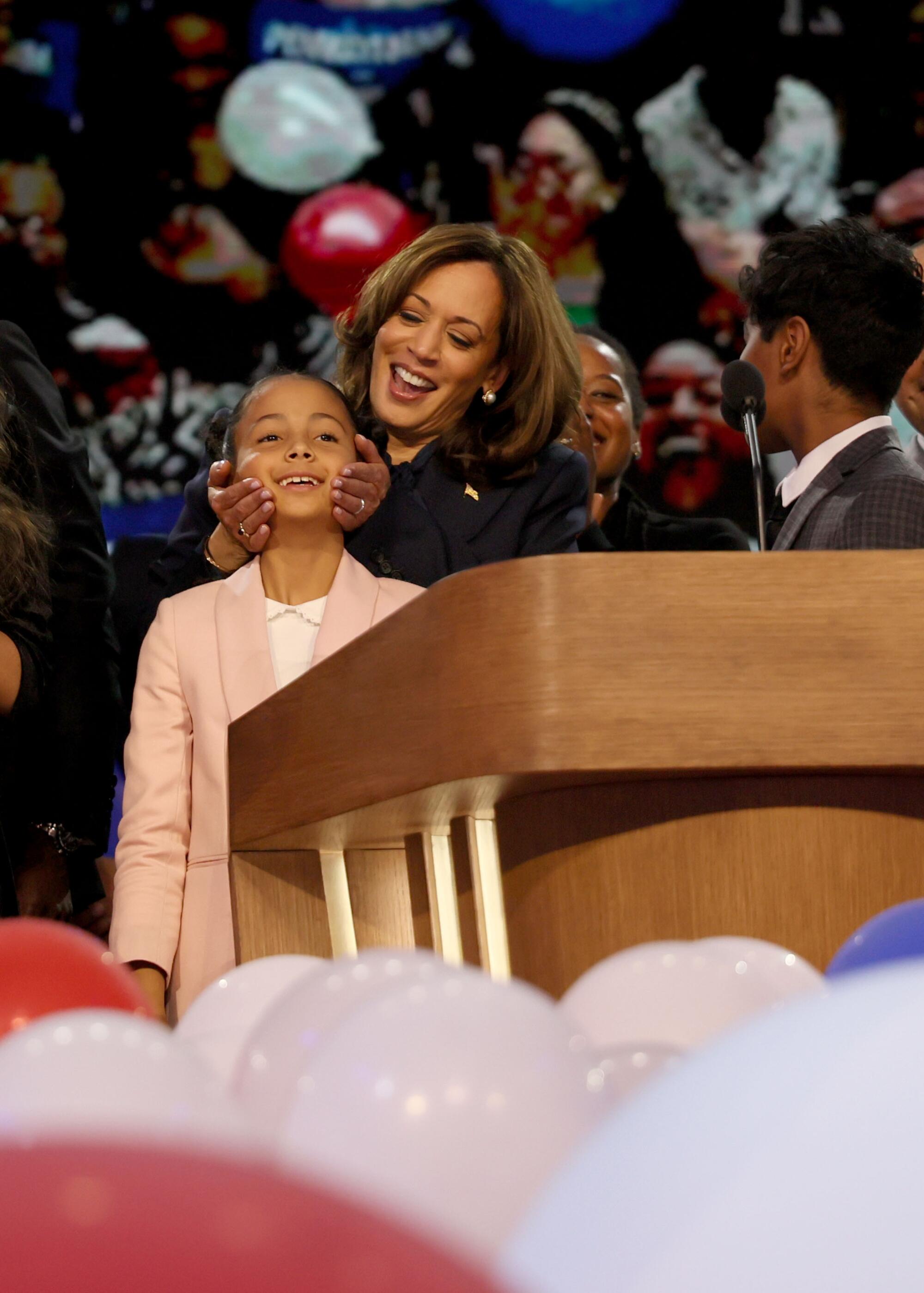
Democratic presidential candidate Vice President Kamala Harris with her great-niece Amara Ajagu during the Democratic National Convention in Chicago.
(Robert Gauthier/Los Angeles Times)
In the early 19th century, Richard Johnson, later to become the ninth vice president, lived openly in rural Kentucky with his common-law wife, Julia Chinn, who was black. While he was a U.S. senator, she managed his plantation.
At a time when interracial marriages were banned, Johnson treated her like his wife: they attended church together and hosted formal galas at his farm for the Marquis de Lafayette and former President James Monroe. They had two daughters, Adaline Chinn Johnson and Imogene Chinn Johnson, who later married white men.
But Johnson's biracial relationship and family situation were frowned upon by many Americans. After Chinn died in 1833 and Johnson campaigned for the vice presidency in 1836 under Martin Van Buren, Johnson was the subject of racist attacks and caricatures.
Although Johnson won the election, Democrats did not re-nominate Johnson for another term.
“A lot of men had these kinds of relationships,” said Amrita Chakrabarti Myers, author of “The Vice President's Black Wife: The Untold Life of Julia Chinn.” “They hid them, they lied about them, and that was OK. What wasn't OK was when they were made public.”
“There was a real fear that an interracial family would become America’s first family,” Chakrabarti Myers added.
It was not until 2008 that the United States elected its first black president: Barack Obama. The son of a white mother and a black father, Obama was also the first president of mixed race.
He leaned on that identity—or, as he put it, “my story of the brief union between a young man from Kenya and a young woman from Kansas who…shared the belief that in America, their son could achieve anything he set his mind to”—as a symbol of the nation’s inexorable progress.
In recent decades, the changing makeup of America's leading political families has made for some awkward moments.
In 1998, then-Vice President George H.W. Bush drew criticism when he described his three Mexican-American grandchildren as “the little brown ones.”
Bush was referring to the three children of his son Jeb and his Mexican-born wife, Columba, and said the comment had been misinterpreted. “Those grandchildren are my pride and joy,” he said.

Republican vice presidential candidate Sen. JD Vance of Ohio and his wife, Usha Chilukuri Vance, during the Republican National Convention in Milwaukee in July.
(Robert Gauthier/Los Angeles Times)
In 2013, Mitt Romney, the 2012 Republican presidential nominee who has more than two dozen grandchildren, celebrated the formal adoption of his 22nd grandchild, who is black.
Melissa Harris-Perry, host of a weekly MSNBC current affairs show, drew criticism when she invited guests to joke about a Christmas photo of Romney surrounded by his grandchildren.
“One of these things is not like the others, one of these things is not the same,” said actress Pia Glenn.
But a new generation of Republican leaders reflects the country's more diverse and mixed-race families. About 1 in 8 Americans is an immigrant and About 1 in 4 American children has an immigrant father.
Vice presidential candidate Sen. JD Vance — a white man raised in Ohio and Kentucky — is married to Usha Chilukuri Vance, the daughter of Indian immigrants. She is Hindu, while he is a former Baptist and atheist who converted to Catholicism. The names of their two sons and daughter reflect the family’s diversity: Ewan, Vivek and Mirabel.




